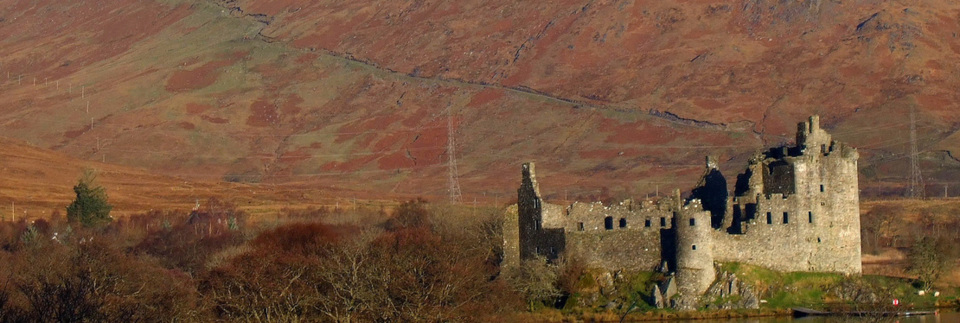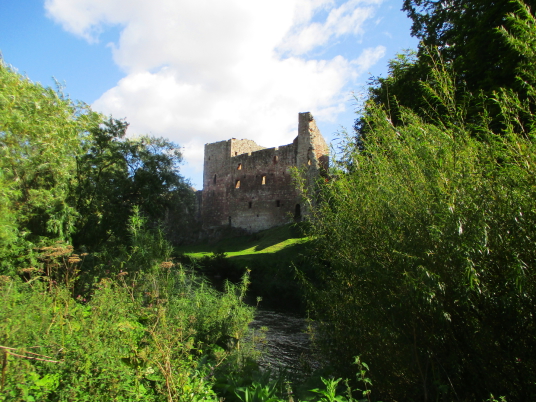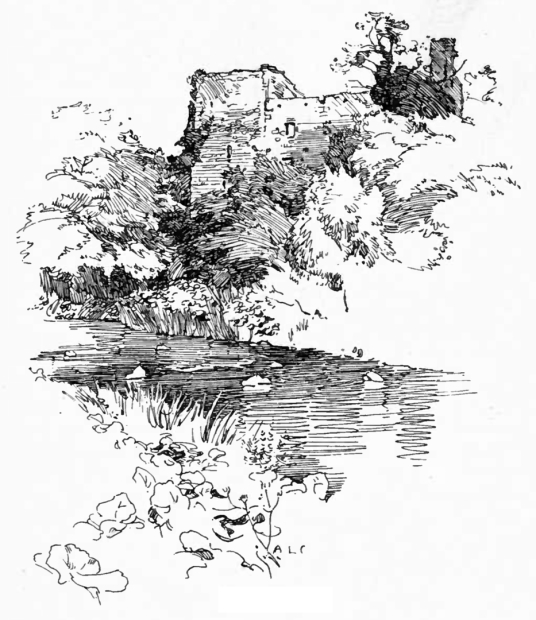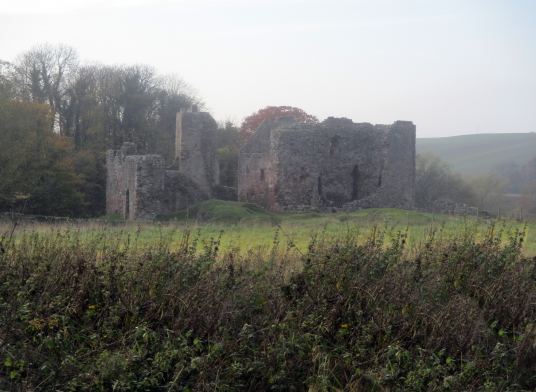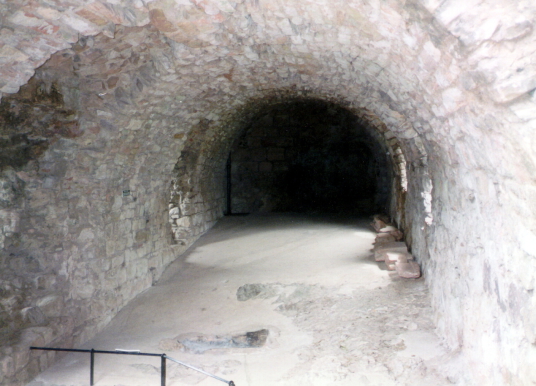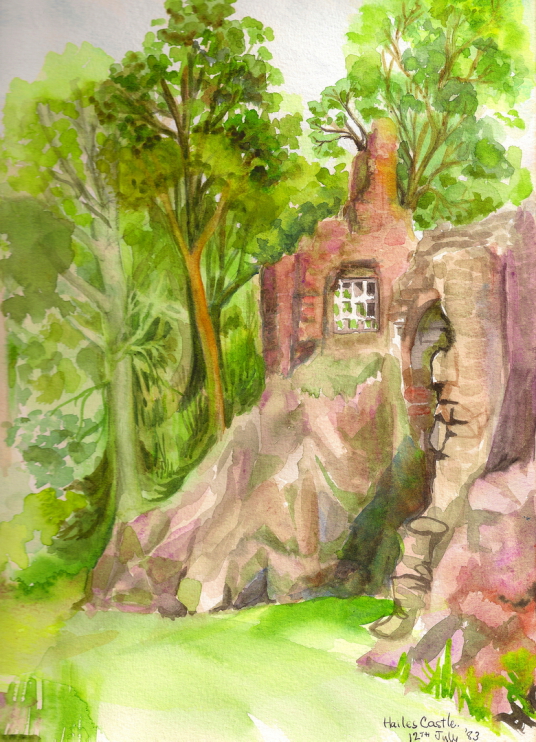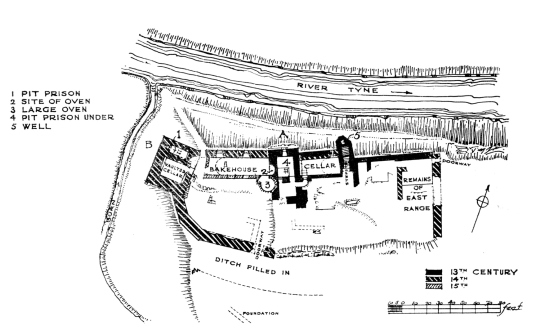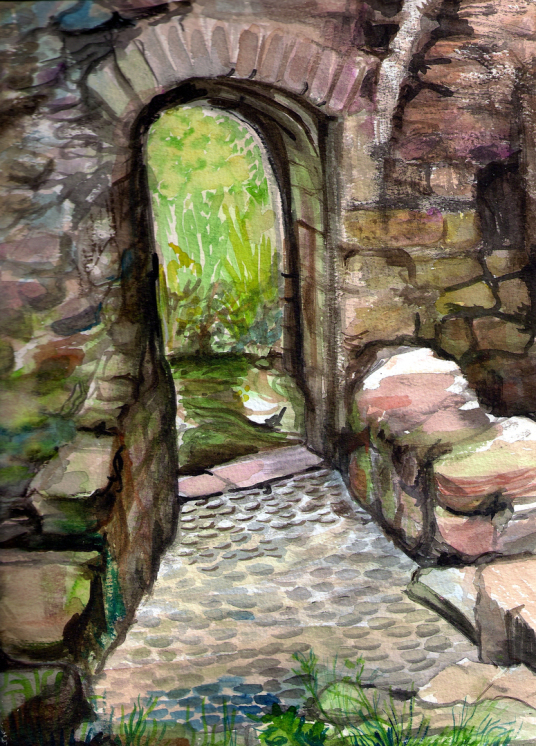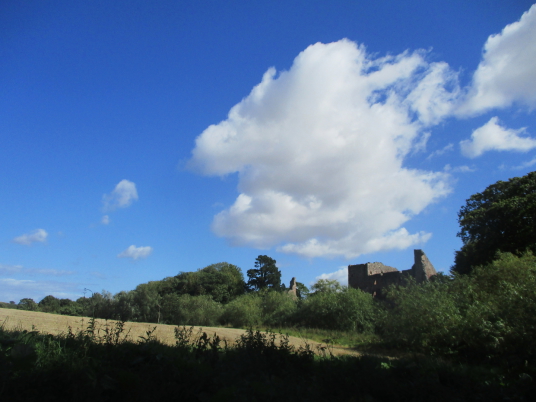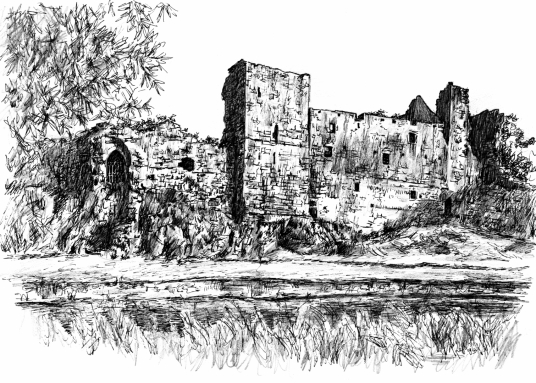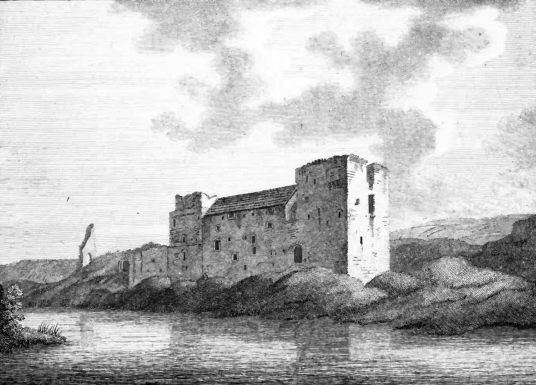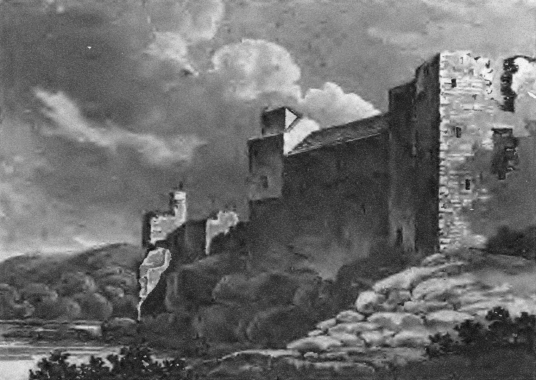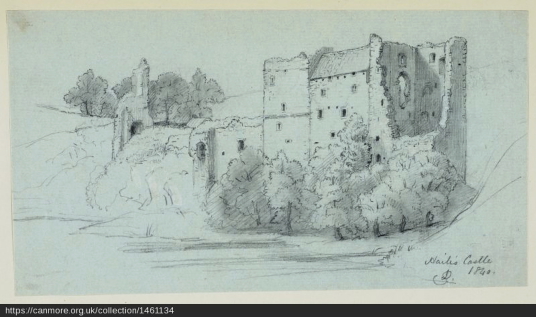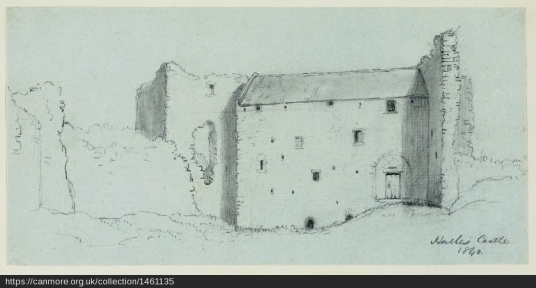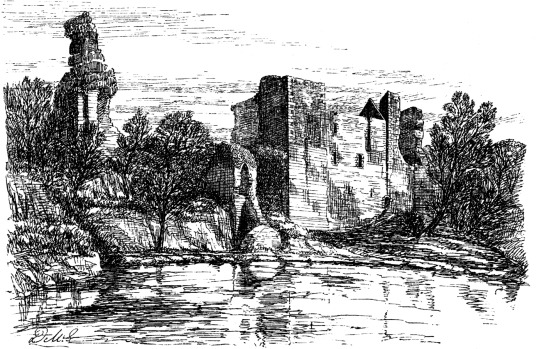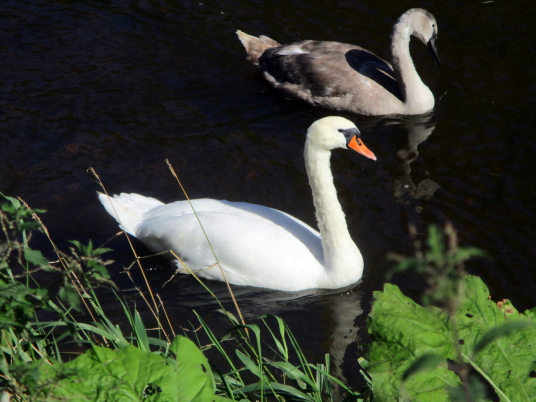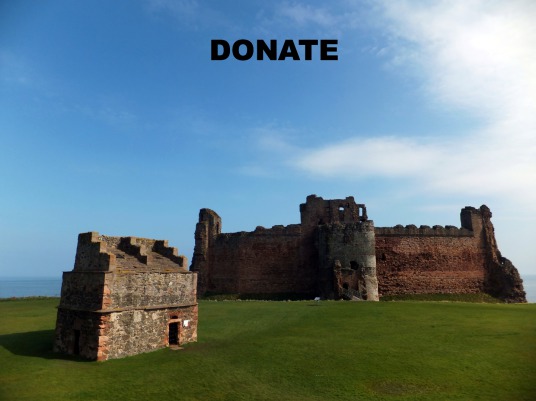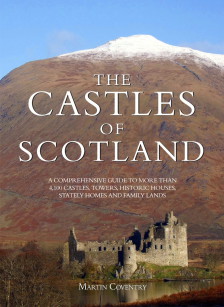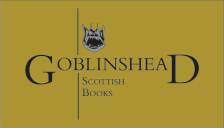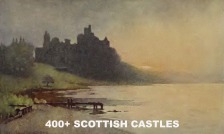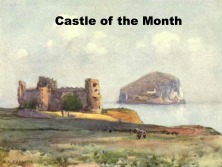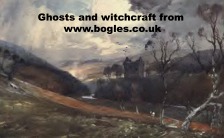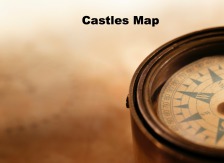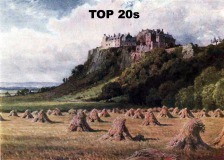–––––– Castle of the Month February 2018 ––––––
Hailes Castle
Hailes Castle is a picturesque and substantial ruinous old fortress, perched on a rocky crag above the River Tyne, near East Linton in East Lothian in southeast Scotland, long held by the Hepburn family and associated with Mary Queen of Scots.
Lothians: About 1.5 miles west and south of East Linton, north of minor road south 1.5 miles from East Linton off A1, on south bank of Tyne, at Hailes Castle.
HES NT 575758 OS: 67 EH41 4PY
OPEN: Access at all reasonable times.
Web: www.historicenvironment.scot
In a lovely location above the River Tyne, Hailes Castle is a scenic ruin. The remains consist of a 14th-century tower, extended by ranges and towers in the 15th and 16th centuries, within a thick 13th-century curtain wall. The castle had a large courtyard, fragments of which remain.
The tower, of at least three storeys, stood at one corner of the original castle and contains a vaulted pit-prison. The upper part of the tower was later made into a doocot. A 14th-century tower had a vaulted basement with another pit-prison. The 15th-century work consists of a hall (or chapel), and a basement bakehouse, between the two towers. There were other buildings, one upstand having a postern gate, and the remains of a well, but these are very fragmentary.
The castle is prominently marked on Blaeu’s map of The Lothians as ‘Hales’. ‘Heels’ is marked on Adair’s map of East Lothian.
Hailes was a Hepburn property, having passed from the Cospatrick Earl of Dunbar and March and the de Gourlay family. It was probably Sir Patrick Hepburn – who played a valiant part in the Battle of Otterburn in 1388 by saving the Douglas banner from falling into the hands of the English – who extended the castle. In 1400 the Earl of March and Harry ‘Hotspur’ Percy, wanting revenge on the Hepburns, failed to take the castle, and were themselves surprised and routed. Adam Hepburn of Hailes rebuilt Whitekirk with stone vaults in 1429.
Archibald Dunbar captured the castle in 1443, and slew all he found within in the walls. Patrick Hepburn became Earl of Bothwell, but was killed at the Battle of Flodden in 1513. The castle was burnt in 1532, and in 1547 was occupied by Patrick Gray, Lord Gray, for the English.
James Hepburn, 4th Earl of Bothwell, brought Mary, Queen of Scots, here after abducting her in 1567. Francis Stewart, Earl of Bothwell, had a ratification of 1585 for the lordship and barony of Hailes, with the castle, tower and fortalice thereof, but he fell out of favour with James VI and was accused of treason and forfeited.
Note: the tower to the right (above) was mostly complete c.1800, but the river side had partially collapsed or was pulled down by 1840 (below), then more also went on the land side. The central block was still roofed in 1840, while the tower to the left of this may have still been a doocot c.1800 but the top part was gone by 1840.
In 1650 the castle was partly dismantled by Cromwell. It passed to the Stewarts, then to the Setons of Barnes, who in 1700 sold the castle to the Dalrymples of Hailes, but was then abandoned for the mansion of Newhailes, near Musselburgh. In 1835 Hailes was being used as a granary. The castle was transferred into state care in 1926 and is owned by HES.
There are stories of an underground passage, which appears to have led under the river, or even to Traprain Law. And also tales that one of the pit prisons is haunted by the spirit of a man imprisoned and starved to death because he had fallen in love with the laird’s wife. A ‘White Lady’ also reputedly haunts the castle.
